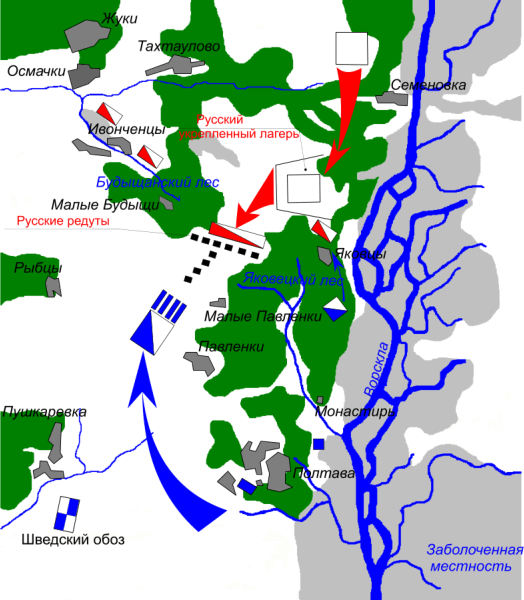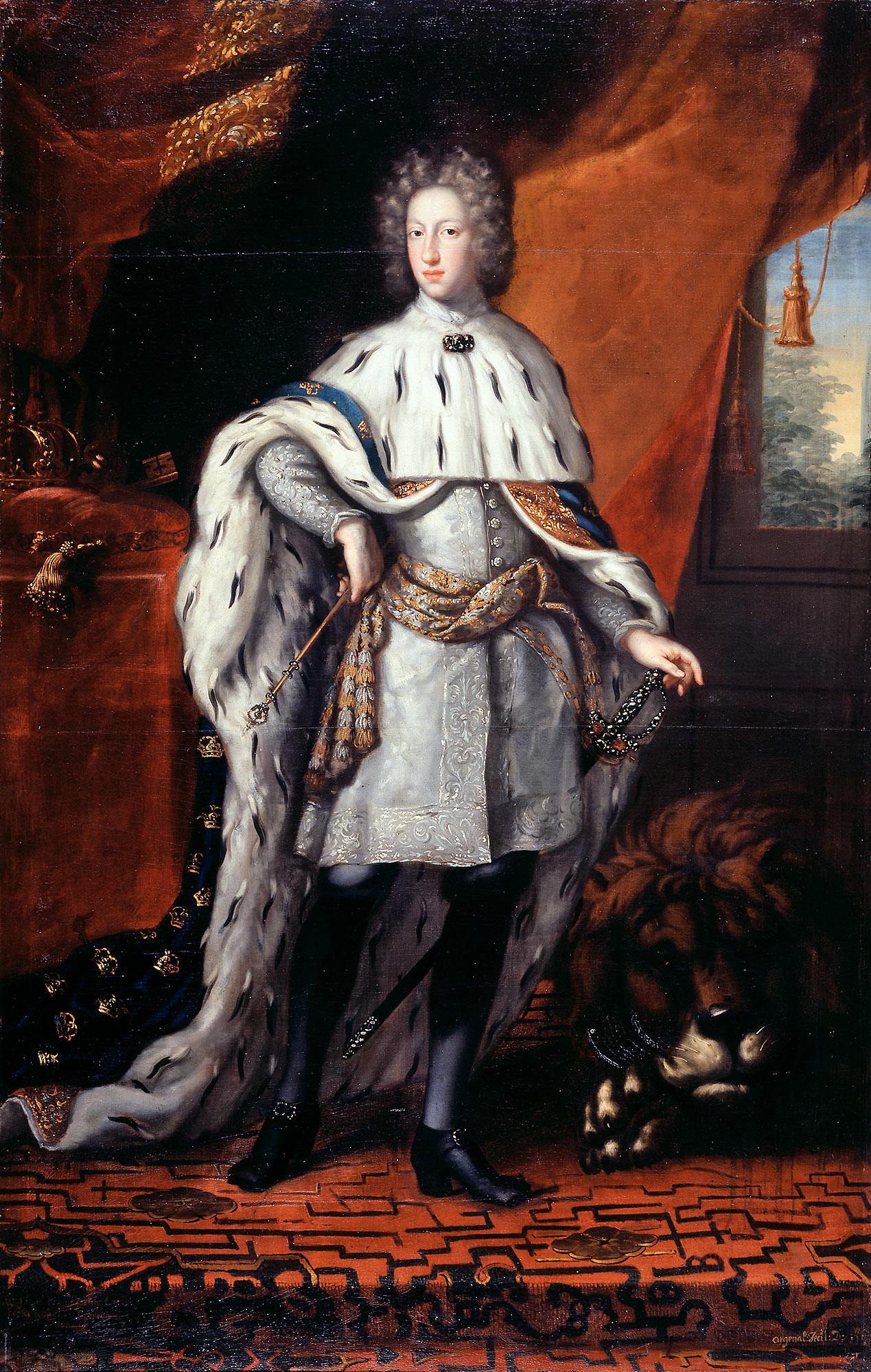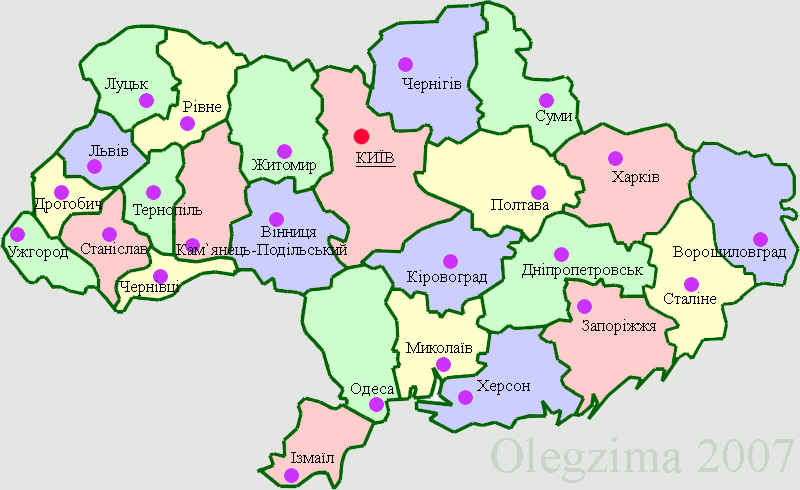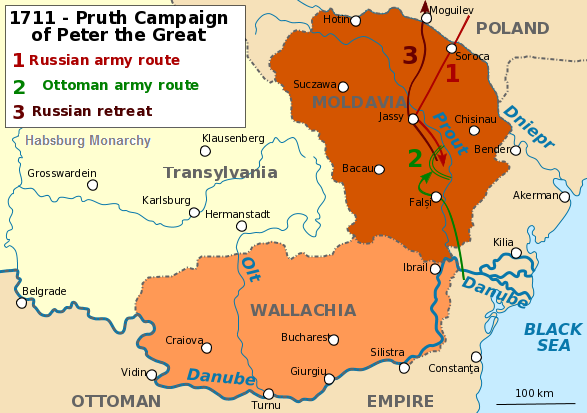|
Perevolochna
Perevolochna ( uk, Переволочна) is a former fortress and town in the Polish–Lithuanian Commonwealth and Cossack Hetmanate, and later a village in Poltava Oblast. Before the establishment of Kamianske Water Reservoir in the 1960s, here also existed a river crossing. The settlement was situated at the bank of the Dnieper near the mouth of Vorskla River,Vyrskyi, D. Perevolochna (ПЕРЕВОЛОЧНА)'. Encyclopedia of History of Ukraine. where a ford across Dnieper enabled people to cross the river, hence its name. The crossing Perevolochna – Mishuryn Rih was also a key crossing during the Battle of the Dnieper in October 1943. History Perevolochna was founded at the turn of the 13th to 14th century by the Lithuanian Great Duke Vitaut as a fortified settlement in order to protect his empire against enemies from the East. Again Perevolochna is mentioned in 1640s belonging to Yuri Nemyrych (Jerzy Niemirycz), but which was also claimed by Potocki family. Since the ... [...More Info...] [...Related Items...] OR: [Wikipedia] [Google] [Baidu] |
Surrender At Perevolochna
The surrender at Perevolochna was the capitulation of almost the entire Swedish army on 30 June 1709 ( O.S.) / 1 July 1709 (Swedish calendar) / 11 July 1709 ( N.S.). It signified the annihilation of the once formidable Swedish army after the defeat at Battle of Poltava, and paved the way for the eventual Russian victory in the Great Northern War. After the Battle of Poltava, Charles XII escaped to Moldavia, a vassal state of the Ottoman Empire. Background Leaving Pushkaryovka around 7 PM on the 28th, the same day as their defeat, the remnants of the Swedish army head south following the west bank of the river Vorskla to the river Dnieper, reaching Stari Sanzhary 20 km to the south where the baggage wagons stopped until dawn while the artillery, treasure-wagons and troops continue on to Novi Sanzhary.Englund, P., 1992, The Battle that Shook Europe, London: I.B. Tauris & Co. Ltd., The artillery reached Novi Sanzhary after midnight, Charles XII at 1:30 AM, and the t ... [...More Info...] [...Related Items...] OR: [Wikipedia] [Google] [Baidu] |
Battle Of Poltava
The Battle of Poltava; russian: Полта́вская би́тва; uk, Полта́вська би́тва (8 July 1709) was the decisive and largest battle of the Great Northern War. A Russian army under the command of Tsar Peter I defeated a Swedish army, under the command of Carl Gustaf Rehnskiöld. The battle put an end to the status of the Swedish Empire as a European great power, as well as its eastbound expansion, and marked the beginning of Russian hegemony in Northern Europe. During the course of six years in the initial stages of the war, King Charles XII and the Swedish Empire had defeated almost all participants in the anti-Swedish coalition, which initially consisted of the Polish-Lithuanian Commonwealth, Denmark-Norway and the Tsardom of Russia. The latter under Tsar Peter I's rule was the only one still undefeated. Charles XII therefore chose to invade Russia in the autumn of 1707 and march towards Moscow with a large Swedish army. However, the campaign ... [...More Info...] [...Related Items...] OR: [Wikipedia] [Google] [Baidu] |
Charles XII Of Sweden
Charles XII, sometimes Carl XII ( sv, Karl XII) or Carolus Rex (17 June 1682 – 30 November 1718 O.S.), was King of Sweden (including current Finland) from 1697 to 1718. He belonged to the House of Palatinate-Zweibrücken, a branch line of the House of Wittelsbach. Charles was the only surviving son of Charles XI and Ulrika Eleonora the Elder. He assumed power, after a seven-month caretaker government, at the age of fifteen. In 1700, a triple alliance of Denmark–Norway, Saxony– Poland–Lithuania and Russia launched a threefold attack on the Swedish protectorate of Holstein-Gottorp and provinces of Livonia and Ingria, aiming to draw advantage as the Swedish Empire was unaligned and ruled by a young and inexperienced king, thus initiating the Great Northern War. Leading the Swedish army against the alliance, Charles won multiple victories despite being usually significantly outnumbered. A major victory over a Russian army some three times the size in 1700, at the ... [...More Info...] [...Related Items...] OR: [Wikipedia] [Google] [Baidu] |
Aleksandr Menshikov
Prince Aleksander Danilovich Menshikov (russian: Алекса́ндр Дани́лович Ме́ншиков, tr. ; – ) was a Russian statesman, whose official titles included Generalissimo, Prince of the Russian Empire and Duke of Izhora ( Duke of Ingria), Prince of the Holy Roman Empire, Duke of Cosel. A highly appreciated associate and friend of Tsar Peter the Great, he was the ''de facto'' ruler of Russia for two years. Early life Menshikov was born on in Moscow. Historian Paul Bushkovitch argues that Menshikov was not an aristocrat and was most likely descended from servants of the palace stables, who among others made up the first soldiers of Peter's 'toy armies.' As the legend (dating from around 1710) goes, he was making a living on the streets of Moscow as a vendor of stuffed buns known as pirozhki at the age of twenty. His fine appearance and witty character caught the attention of Franz Lefort, Peter's first favourite, who took him into his service and finall ... [...More Info...] [...Related Items...] OR: [Wikipedia] [Google] [Baidu] |
Yuri Nemyrych
Jerzy Niemirycz or Yuriy Nemyrych ( uk, Юрій Стефанович Немирич 1612–1659) was a Polish-Lithuanian magnate and politician of Ruthenian stock (gente Ruthenus natione Polonus) and Cossack Hetmanate official and diplomat. Biography Jerzy Niemirycz was born in Ovruch, Kiev Voivodeship ( Polesia region) in 1612 during the Polish-Lithuanian intervention in Muscovy, the oldest son of wealthy Polish-Lithuanian Anti-Trinitarians noble family, Klamry coat of arms. His father was a podkomorzy of Kiev Stefan Niemirycz (died 1630) and his mother was Maria Wojnarowska, (died 1632). He studied at the Racovian Academy in Raków, Kielce County, then in Leiden, and travelled across Western and Southern Europe, and then back at Leiden. He has shown great interest in politics, evidenced by his work ''Discursus de bello Moscovitico,'' written in 1633 and dedicated to his uncle and fellow Polish Brethren Roman Hojski. Upon his return home, Polish–Lithuanian Commonwea ... [...More Info...] [...Related Items...] OR: [Wikipedia] [Google] [Baidu] |
Adam Ludwig Lewenhaupt
Adam Ludwig Lewenhaupt (15 April 1659 – 12 February 1719) was a Swedish general, particularly known for his participation in the Great Northern War. Biography He was born on 15 April 1659 in a Swedish fortified camp near Copenhagen. He attended Lund University, Rostock, Wittenberg and Uppsala, he originally pursued a career in the diplomatic arena, but found this occupation quite undesirable. He then became a soldier, served in the Austrian Army against the Turks, and later in the Dutch Army under William III in Holland. He returned to Sweden in 1697. When the Great Northern War broke out, he was placed in command of a newly created regiment of infantry. He was one of the few successful commanders against the Russians in the Baltic region while King Charles XII was on campaign in Poland and Saxony. In 1705, Lewenhaupt won the battle of Gemauerthof and was appointed Governor of Riga. In 1708, he was ordered to march east with a supply column, to support Charles's primary ... [...More Info...] [...Related Items...] OR: [Wikipedia] [Google] [Baidu] |
Oblasts Of Ukraine
An oblast ( uk, о́бласть; ) in Ukraine, often called a region or province, is the main type of first-level administrative division of the country. Ukraine's territory is divided into 24 oblasts, as well as one autonomous republic, Crimea, and two cities with special status, Kyiv and Sevastopol. Ukraine is a unitary state, thus the oblasts do not have much legal scope of competence other than that which is established in the Ukrainian Constitution and by law. Articles 140–146 of Chapter XI of the constitution deal directly with local authorities and their competency. Oblasts are subdivided into raions (districts), each oblast having from 3 to 10 raions following the July 2020 reform. General characteristics In Ukraine, the term '' oblast'' denotes a primary administrative division. Under the Russian Empire and into the 1920s, Ukraine was divided between several governorates. The term ''oblast'' was introduced in 1932 by Soviet authorities when the Ukrainian SSR ... [...More Info...] [...Related Items...] OR: [Wikipedia] [Google] [Baidu] |
Sweden
Sweden, ; fi, Ruotsi; fit, Ruotti; se, Ruoŧŧa; smj, Svierik; sje, Sverji; sju, Sverje; sma, Sveerje or ; yi, שוועדן, Shvedn; rmu, Svedikko; rmf, Sveittiko. formally the Kingdom of Sweden, is a Nordic countries, Nordic country located on the Scandinavian Peninsula in Northern Europe. It borders Norway to the west and north, and Finland to the east. At , Sweden is the largest Nordic country and the List of European countries by area, fifth-largest country in Europe. The Capital city, capital and largest city is Stockholm. Sweden has a population of 10.5 million, and a low population density of ; around 87% of Swedes reside in urban areas in the central and southern half of the country. Sweden’s urban areas together cover 1.5% of its land area. Because the country is so long, ranging from 55th parallel north, 55°N to 69th parallel north, 69°N, the climate of Sweden is diverse. Sweden has been inhabited since Prehistoric Sweden, prehistoric times, . T ... [...More Info...] [...Related Items...] OR: [Wikipedia] [Google] [Baidu] |
Pruth River Campaign
The Russo-Ottoman War of 1710—1711, also known as the Pruth River Campaign, was a brief military conflict between the Tsardom of Russia and the Ottoman Empire. The main battle took place during 18-22 July 1711 in the basin of the Pruth river near Stănilești (Stanilesti) after Tsar Peter I entered the Ottoman vassal Principality of Moldavia, following the Ottoman Empire’s declaration of war on Russia. The ill-prepared 38,000 Russians with 5,000 Moldavians, found themselves surrounded by 200,000 Turks under Grand Vizier Baltaci Mehmet Pasha. After three days of fighting and heavy casualties the Tsar and his armies were allowed to withdraw after agreeing to abandon the fortress of Azov and its surrounding territory. The Ottoman victory led to the Treaty of the Pruth which was confirmed by the Treaty of Adrianople. Background The Russo-Ottoman War of 1710-1711 broke out as a result of the Great Northern War, which pitted the Swedish Empire of King Charles XII of Sweden ag ... [...More Info...] [...Related Items...] OR: [Wikipedia] [Google] [Baidu] |
Ukrainian Line
Ukrainian defensive line was a Russian heavily fortified defensive line on the territory of modern Ukraine built between 1731–1764 on the lands of the Zaporozhian Sich and the Cossack Hetmanate. Built by imperial Russia, it strengthened the defense of the southern borders from Tatar incursions and established military bases in approximation to the Crimea. 285 kilometers in length, it comprised 16 newly-constructed forts and 4 old forts repaired. The first stage was built from 1731–40 and subsequent construction began in the 1740s. History of construction Since the late 1720s, the Russian Empire began to actively prepare for war with the Ottoman Empire for the return of Azov and Northern Azov Sea Region. The Ukrainian line was built to prevent the Tatar incursion into the Poltava territory of the Hetmanate and the Kharkov territory of Sloboda Ukraine. The line proved to be of limited success given the distance between the fortresses and that the Crimean Tatars excelled ... [...More Info...] [...Related Items...] OR: [Wikipedia] [Google] [Baidu] |
Moldavia
Moldavia ( ro, Moldova, or , literally "The Country of Moldavia"; in Romanian Cyrillic: or ; chu, Землѧ Молдавскаѧ; el, Ἡγεμονία τῆς Μολδαβίας) is a historical region and former principality in Central and Eastern Europe, corresponding to the territory between the Eastern Carpathians and the Dniester River. An initially independent and later autonomous state, it existed from the 14th century to 1859, when it united with Wallachia () as the basis of the modern Romanian state; at various times, Moldavia included the regions of Bessarabia (with the Budjak), all of Bukovina and Hertsa. The region of Pokuttya was also part of it for a period of time. The western half of Moldavia is now part of Romania, the eastern side belongs to the Republic of Moldova, and the northern and southeastern parts are territories of Ukraine. Name and etymology The original and short-lived reference to the region was ''Bogdania'', after Bogdan I, th ... [...More Info...] [...Related Items...] OR: [Wikipedia] [Google] [Baidu] |
Dnieper River
} The Dnieper () or Dnipro (); , ; . is one of the major transboundary rivers of Europe, rising in the Valdai Hills near Smolensk, Russia, before flowing through Belarus and Ukraine to the Black Sea. It is the longest river of Ukraine and Belarus and the fourth- longest river in Europe, after the Volga, Danube, and Ural rivers. It is approximately long, with a drainage basin of . In antiquity, the river was part of the Amber Road trade routes. During the Ruin in the later 17th century, the area was contested between the Polish–Lithuanian Commonwealth and Russia, dividing Ukraine into areas described by its right and left banks. During the Soviet period, the river became noted for its major hydroelectric dams and large reservoirs. The 1986 Chernobyl disaster occurred on the Pripyat, immediately above that tributary's confluence with the Dnieper. The Dnieper is an important navigable waterway for the economy of Ukraine and is connected by the Dnieper ... [...More Info...] [...Related Items...] OR: [Wikipedia] [Google] [Baidu] |


_01.jpg)


